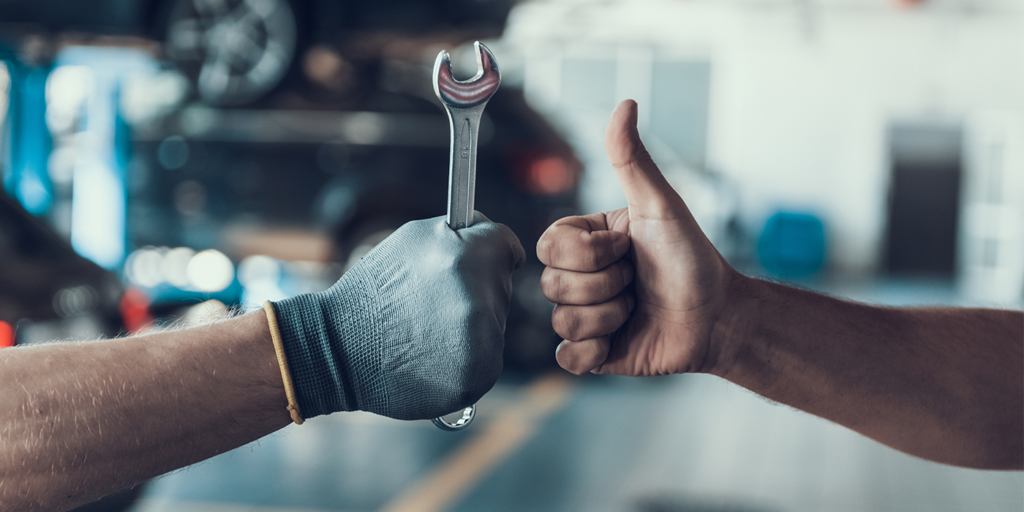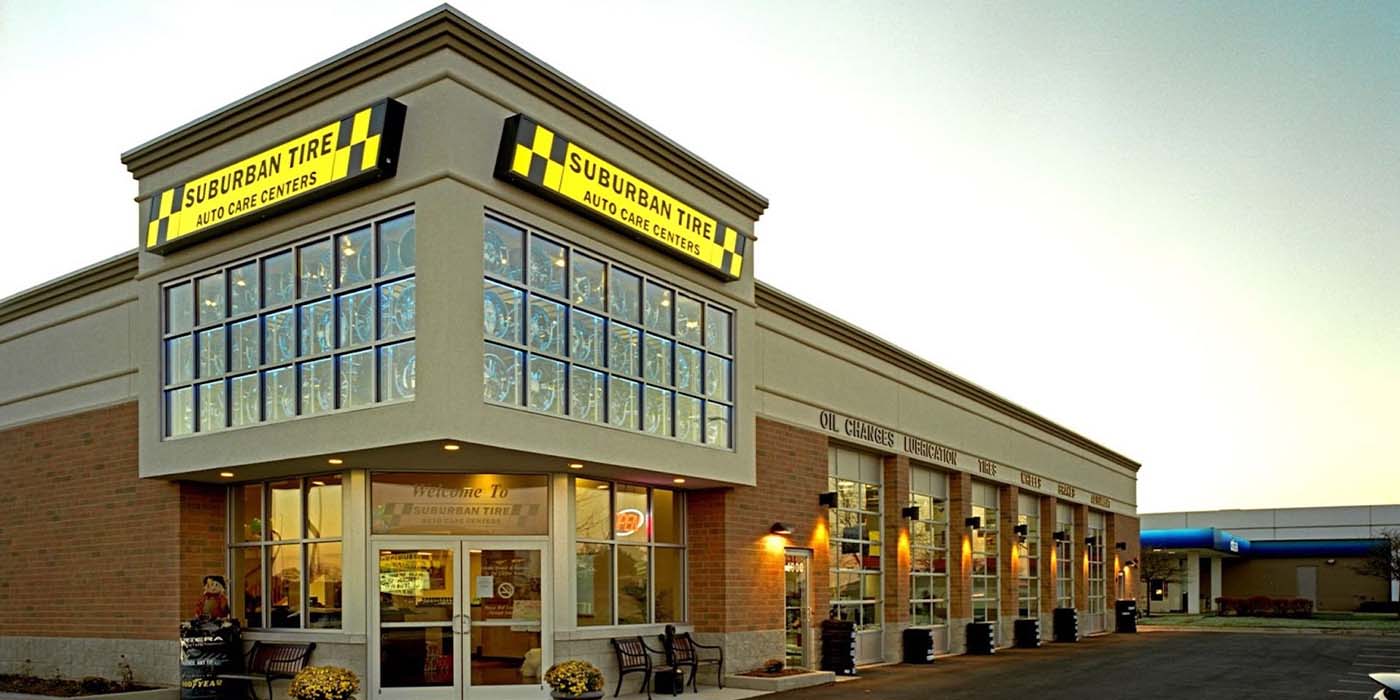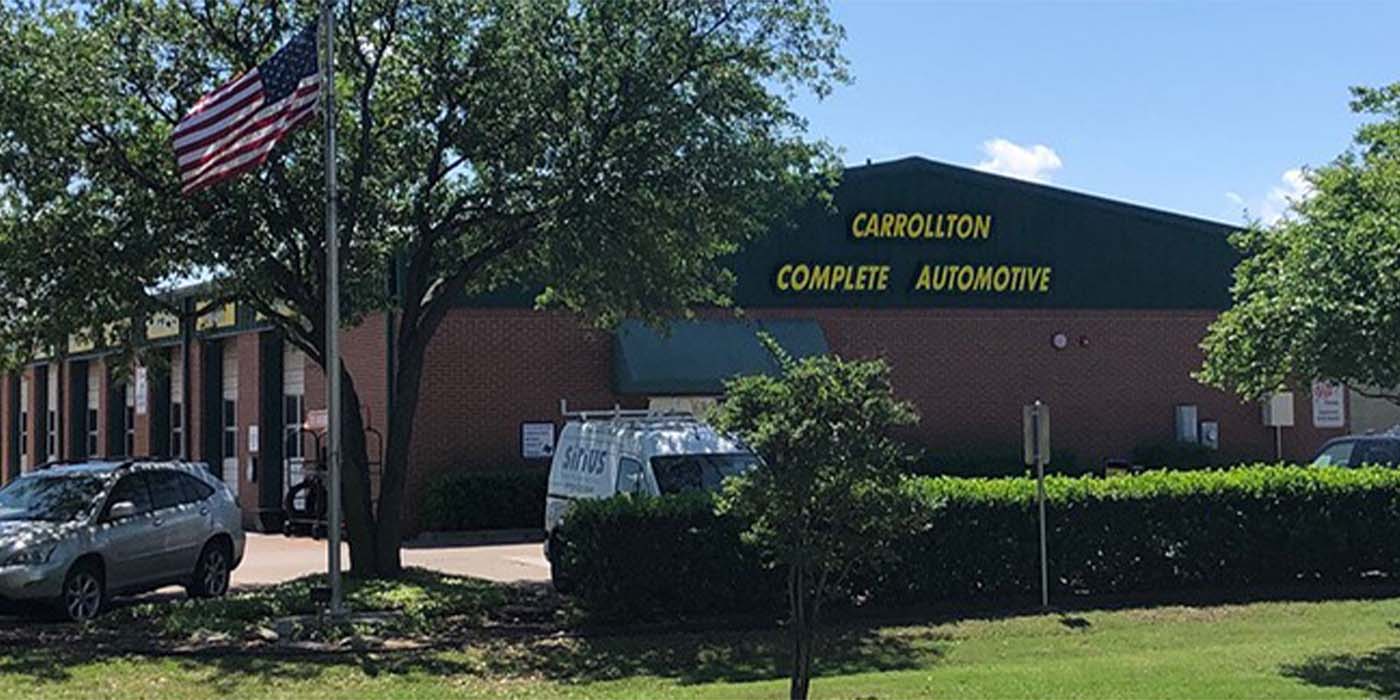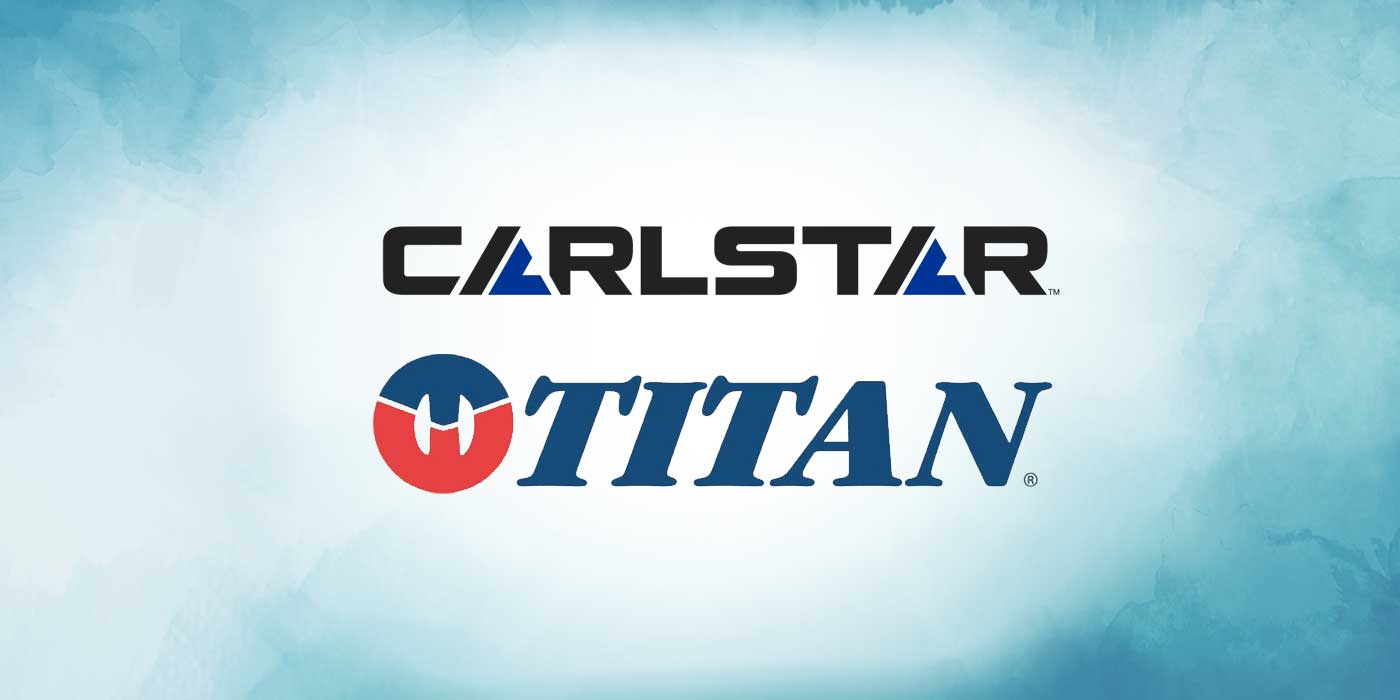It’s a story you may have heard before: the consolidation of retail outlets, advancing technology and additional market shifts will result in increasing pressure for those independent dealers that remain. To analysts and outside observers, that increasing pressure is viewed as a natural evolution of an industry, forcing owners and managers to make necessary changes – and tough decisions – in order to survive and thrive. But when you’re facing it on a daily basis, it feels more like you’re under attack.
Evolution is a polite way to describe the gradual development of a species; what people don’t often discuss is the darker side of the evolutionary process – the death of those not strong enough to survive. It’s worth noting that these “gradual” changes within the replacement tire retail space appear to be taking on fresh momentum. The expression “evolve or die” comes to mind. But instead of planning funerals or placing blame, let’s instead explore the trends behind what’s happening and options to support your success moving forward.
The Tipping Point
Our industry is at a tipping point. The floodwaters have been quietly rising for several years. It’s only now that they threaten to wash away those shops that lack a firm foundation. The once simple landscape of independent entrepreneurs who, for one reason or another, decided to sell tires for a living is already eroding. In fact, I predict that the landscape of 10 years ago will hardly resemble the same industry 10 years from now.
As one insider put it, “the train has already left the station – most dealers don’t even realize they’ve been left behind.” According to multiple industry experts interviewed for this story, a shop with fewer than three bays may not be sustainable in the next five to ten years operating as they are today.
How could this be? Consider the rising expenses just to stay up to date, including the tools, talent, training and technology required to continue to service increasingly sophisticated vehicles. Even if you factor in the cost of diagnostic tools alone – tens of thousands of dollars in annual software updates – you can see what a challenge it is for a two-bay shop to produce the volume and profits necessary to make a decent living while continuing to work on today and tomorrow’s vehicles.
Many tire dealers today are just successful enough and comfortable enough to feel like they don’t have to change, but at the same time, they’re not fully aware of all the change that’s going on in the market around them. Independents will soon become either agents of change or a victim of change, depending on their response to the trends.
For those that see the glass as half empty, the challenge to keep up is spurring some long-time dealers to find an out – to make plans to either hang it up or find a buyer, further feeding the consolidation and acquisition trends.
Others see the trends as an opportunity. Instead of looking for a way out, their glass is half full – they’re looking for ways to ramp things up and grow.
While owners of some larger dealerships say there’s never been a better time to be in the tire business, some smaller tire dealerships may no longer be able to afford to continue as generalists, their evolution may come from specializing in a niche, narrowing their offering now so they build a reputation on what promises to be a sustainable business for tomorrow.
Solving for the quest for growth and the rising cost of shop operations opens up additional influences impacting the industry, what I call OPM – Other People’s Money.
With the huge expense of starting, maintaining, growing – and even inheriting – a tire and auto service operation in today’s marketplace, increasing numbers of family-owned and privately held tire operations have taken on partners and outside investment to support necessary growth and evolution. This influx of outside cash into what historically has been a fraternal, family-owned, community-centric business landscape layered on performance expectations that may or may not necessarily be realistic, such as pushing for a strong percentage of growth in an oft-flat market. The additional pressure of OPM also contributes to the trends of expansion and acquisition, adding more fuel to the evolution of the marketplace.
Adding to the pressure of profitability is the proliferation of SKUs and the complexity of inventory, solved by just-in-time delivery and the outside sourcing of product. But does that convenience-now-necessity lead to unhealthy co-dependent relationships with distributors? But as the big get bigger, will larger distributors will lose interest in servicing the needs of the smaller independent dealers – placing unit growth at scale over the work it may take to nurture smaller accounts? While this opens up an opportunity, for regional wholesalers, it could place some dealers at a competitive disadvantage. And if smaller independent dealers no longer have the attention, pricing and support of former distributor partners to stay competitive, they risk getting squeezed out. But instead of allowing yourself to get squeezed, look for ways to squeeze the most profit out of the units you sell. You can do this by promoting the lines with more generous associate dealer programs (see the March issue of Tire Review), taking a closer review of your business practices more often, and rethinking your approach to buying to profitably position yourself against the larger players in your local market.
Shifts in Ownership
Yes, the big are getting bigger. While the number of retail tire locations has remained steady over the past 10 years, the number of owners has declined – a trend that is expected to continue over the next three to five years.
Of those that are “independently owned” locations, an estimated 60 percent are single-store operations. According to a recent survey by Babcox Research, roughly 70 percent of independently owned tire dealerships have no written succession plan in place – even though the owner may be counting on the value of the business to support them in retirement. Through that lens, layering in the mounting costs of operational capabilities, one can see why consolidation and the “buying up” of independents is an increasingly attractive option for those looking to grow, and for business owners looking for the exit.
As mentioned earlier, for independent tire dealers – owners like you who “sign both sides of their paycheck” – these trends are either cause for concern or an opportunity in disguise. Competing against the local guy down the street seems far less intimidating than going up against a major chain with time-tested business practices and deep pockets. On the other hand, a solid independent tire dealer – one that is entrenched in the community with a reputation and focus on great service, quality products and fair prices – can often beat out the larger chains and their disengaged staffs.
“We are an independent, and it’s scary every time you read the articles in every publication every month,” said Joe Quigg, owner of Ed’s Tire & Service with six locations in and around Fayetteville, North Carolina. “In talking with [tire dealer Chris Monroe]… he was worried about the majors that have bought into his market, but it’s ended up being great for him. He’s [instead] looking at it as low-hanging fruit. When the big players come in, sometimes they lose that personal touch. They lose the community involvement. They lose a lot of the things that as an independent you should be doing.”
Chris Monroe is the owner of Monroe Tire in Shelby, North Carolina, an excellent example of how a single-store location can evolve into a highly successful operation — even when surrounded by competition. (See the October 2017 issue of Tire Review for the complete story on Monroe and his approach to the business.)
There’s a tension at play here. As regional and national mega dealerships expand their footprints through acquisition, many independent owners are rising to the challenge, making a shift to focus on growth, exploring new ways to drive more revenue from the space they have available, weighing the risks and benefits of expansion and reinventing themselves.
At the root of that reinvention is a decision. Do you join up with a larger group or co-op, step things up to go it alone, or sell out altogether?
Let’s explore the options.
Strength in Numbers?
One strategy for survival involves uniting with other independent dealers, coming together under the umbrella of a larger brand in dealer groups, co-ops and various forms of franchises, such as Tire Pros (part of tire distributor ATD), Big O (part of tire distributor TBC Corp.), Mr. Tire/Big 3 Tire (part of K&M Tire) and other co-ops like Point S Tire & Service and the Best-One organization, among others.
While there are wide differences between the various dealer networks, affiliation with a larger group often provides marketing support, purchasing power, consumer financing options and other benefits.
But for some, this “join up” option to fortify against industry challenges actually challenges the very definition of what it means to be categorized as an “independent” tire dealer, especially as collective business models take hold.
As part of the deal, dealers are often faced with the decision to sacrifice a bit of their independence for the greater perceived gains of being part of a larger organization. In return, tire-dealer members typically agree to use the preferred distributor as their main supplier while following any brand expectations and franchise guidelines. The branding requirements vary across the industry – from a complete store remodel and name change to simply having the option to have the group’s name in the store window.
As a result, in hometowns across America, generation-old tire dealerships are swapping out old signs for new, some taking on a variation of the original family business name or replacing it all together for a better known brand.
For some, the sacrifice is a necessary next step in the evolution of their business, providing a strategic advantage to position their store against regional and national mega-dealerships and large national chains, rallying around the idea of strength in numbers. Yes, they are still owners of their locations, but by sacrificing a bit of their operational and promotional independence, many expect to see a long-term gain in return.
Bob Bittner, vice president of operations for Tire Pros, is no stranger to the struggle of independent tire dealers when it comes to affiliations with a larger group of dealers. He cautions that you only get out of it what you put in.
“Independent dealers, by and large, suffer simply because they’re not connected. While [changing the name of your business] can be a pain point, independents need to balance that with the amount of pain they see in the face of growing competition, shrinking margins and how that impacts their long term business success,” Bittner says. “It’s hard to dispute the fact that there is strength in numbers, and we want to leverage that by partnering with those who not only want to compete but want to win in the market… The financial investment by a Tire Pros dealer compared to traditional franchises makes us an attractive and very affordable option. We do ask that they share their name [with the Tire Pros] identity, but most say that being part of a national brand makes that a small price to pay.”
Some dealers disagree. Dan Nothdurft is an independent tire dealer and ATD customer who is affiliated with Tire Pros, but is hesitant to go “all in” on their branding requirements. He and his brother Dale own Tires Tires Tires (a.k.a Tires3), a high-volume operation and 2010 Tire Review Top Shop winner with multiple locations in Sioux Falls, South Dakota, and Sioux City, Iowa. Dan is also a current Tire Industry Association board member and past industry Humanitarian Award Winner.
As a strong independent dealer, Nothdurft says Tires Tires Tires has invested large amounts of money in the marketing of their business. Because he’s made such a commitment to building awareness in his local markets, he finds it difficult to change the business name, look and feel as part of a national affiliation.
“We spend a lot of money on marketing and the branding of our store, so it’d be really hard for us to become somebody else,” Nothdurft explains. “As an independent dealer, we have more opportunity for providing our customers [with what’s best for them] instead of being tied into just certain lines of tires. We’re an independent. We can sell every line of tire that is available out there because that’s what most customers want. Everybody likes something different. I’m not saying [being part of a larger organization is] a bad thing. [But operating as an independent] gives us more opportunity to meet every one of our customers’ needs in an independent way.”
Bittner agrees that being part of a larger network is not always the best choice for every dealer – especially those who are hesitant or unwilling to go “all in” on the concept.
“Not every dealer fits our profile, and we don’t fit every dealer’s circumstance,” Bittner says. “The real value in a Tire Pros franchise partnership is not a return on investment – it’s a return on engagement. You don’t just hang a [Tire Pros] sign and become an overnight success. It’s not a silver bullet – there’s some real work involved like there is in any successful partnership.”
Point S is among the branded co-op groups gaining ground in the United States. Globally, Point S has 3,500 independent dealers in 28 countries. Their push into the U.S. came in 2015 when 206 locations of the Oregon-based Tire Factory joined the Point S network.
“We feel like we have a strong value proposition to go in and help shore up their business and give them all the benefits of a little bit larger company, but still help them keep their independence and compete against the onslaught of competition that is coming in there,” says Clint Young, director of sales and business development at Point S. “The financial investment in becoming an owner in our cooperative is an investment in a share. That gives them their right to vote and that basically supports the co-op, supplying them tires and acting as their home office, helping them work.”
Currently, there are 212 Point S locations across the western United States, a number Point S plans to increase as it expands the organization, including the addition of 20 locations in 2018 with plans for a new distribution center in Memphis.
Creating Business Value
For some independent tire dealers, investing in a national brand is part of a larger strategy to earn a higher business valuation. They leverage being part of a franchise or larger network of tire dealerships as a means to increase business value when it’s time to sell or transition.
When a buyer is interested in your business, one of the first questions they’ll ask is “Are you staying?” Business investors know that having the existing owner at the counter adds significant value to a business. But when a business is part of a franchise or functions as a franchise with detailed operational practices and standards in place, having the owner stay on as part of the deal is not as important.
Bud Luppino, owner of Bud’s Tire Pros with three locations in southern California, actively explores ways to increase business value. With the high cost of expansion and additional regulatory challenges of operating an automotive-related business in California, Luppino takes a sharp focus on increasing in-bay efficiencies and ways to get more revenue out of his existing operation. His connection to Tire Pros – recognized as the original Tire Pros location – is part of a broader strategy to increase business worth.
“If you’re a franchise, a national franchise, you can get up to a 25 percent premium on the value of your business,” says Luppino, adding that the real gains come if and when you decide to sell.
Even the strongest single-location dealers struggle when it comes to the perceived value of their business. As a single-store location near Silicon Valley in California, Alpio Barbara, owner of Redwood General Tire and a strong advocate for the independent dealer, says that the outside investors he’s talked to are more interested in the number of locations than store volume.
“That guy’s got six stores, got seven stores, you know, they don’t look at it the same because he’s got one store,” Barbara says. “Well, my one store does more business than four of yours combined. Some of these guys ask, how come you can’t sell your store? Well, because I’ve got one store. Someone doesn’t want to buy one store, they want to buy six or seven stores. So even with the volume, people [are hesitant].”
Young of Point S believes that the trends are making it increasingly difficult for the purely independent dealer to be successful.
“I think we’re going to continue to see independence in a precarious position long term, and there’s going to be the need for [tire dealers] to align themselves with someone. I know I’m a little jaded, but there aren’t many options out there,” Young said. “It seems like it’s getting harder and harder for those true independents. The consolidation of the industry is fierce and they’re feeling an enormous amount of pressure to compete and maintain margin.
“The future for independents I think is a little scary. I don’t think you’ll eliminate independence. When you’re talking about what we offer in consumer facing tools, to have the pocketbook to do it, that’s obviously another challenge. They have limited funds typically to go in different directions like [digital marketing and online customer-facing tools]. And that’s where buying group can really help them, to be a kind of force multiplier with their bank account.”
Point S requires more of its owners compared to a Tire Pros or a Mr. Tire/Big 3 Tire location. Young said they have expectations of ownership to update fully participating locations into the look and feel of their brand – from the name to the store design to the marketing. He adds that it helps the brand maintain its strength, which in return strengthens the organization so all can benefit.
“To be successful, the tire dealer today, tomorrow and 10 years from now is going to really have to be willing to change, to adjust, to be nimble and to try something and try some new things,” said Ron Sinclair, president of Tire Pros and chief marketing officer with ATD, adding that the priority should be around staying relevant to the consumer – a consumer who is now driving changes in expectations for a professional and easy customer experience.
With distributors as the driving force behind many of the co-ops and dealer networks, some tire dealers get the feeling that the companies care more about sales than they do about their dealers. Perhaps pressures from OPM may also be at play.
“I use [my distributor] as an example, but it could be any of them,” says Barbara, sharing strong opinions on changes he sees in industry relationships. “All they care about is selling units. They’re an investment company – they are not tire dealers. So these guys have never bought or sold tires like we have. All they care about is that they’re running [a profitable business]…. They don’t care about the independent tire dealer either. They do not care. The field guys are instructed to sell. They do try to help us, but there’s no real loyalty anymore.”
Rising to the Challenge
While some shops find comfort and an easier path through unification, other dealers see the challenges and trends to be a huge opportunity for the independent tire dealer. The glass is not only half full – it’s about to overflow!
According to Marc Pons, it’s a great time to be a tire dealer. Owner of Chapel Hill Tire and 2012 Tire Review Top Shop winner, Pons encourages independent dealers to get out there and get involved to help navigate the changes in the industry and stay on top. Pons says he seeks out opportunities to connect with others, to learn what’s working for them.
“Eventually you hit a wall and you use up all you’ve got,” Pons says. “You’ve got to get out of the office to see new ideas and new ways of doing things. So, I say join a 20 group, get involved with industry groups, your [industry associations]. Connect and network.”
In addition to getting out, others recommend diving in, taking a deep dive into improvements you can make to ensure your business is performing as well as it should be.
“I think that’s something that we’ve got to grasp,” says Quigg of Ed’s Tire. “It’s making sure that you’re buying right. It’s a pain in the butt to deal with your vendor every week and every month, but you’ve gotta make sure that you’re buying right. [My vendor relationships have] been great and I’m as loyal as I can be, but I’m beating my guy up all the time about it. You’ve got to make sure you’re [watching the details].”
Still others say it starts with mindset.
“I’ll be quite honest with you – everybody limits themselves in their own mind,” says Nothdurft, who is preparing for the opening of a fourth Tires Tires Tires location in May. “You’re only and largest competition is yourself and where you limit your thinking. You can do anything you want to do as long as you’re willing to sacrifice in the beginning to get all of the things that you think that everybody needs for their business. Every situation’s different, but to be an independent, you’ve got to be willing to put in half days – and that’s 12 hours a day – to be successful. It takes sacrifice and time.”
Bittner adds that the best way for independents to ensure their survival is to embrace and provide what the consumer demands today. That includes digital customer acquisition and retention, and a seamless transaction with higher level of service based on an easy customer experience.
Though Nothdurft operates a larger tire dealership in his area, he also sees smaller shops having an opportunity for an advantage, assuming they rise to the challenge.
“I think the smaller shop owner has a better opportunity to be more personable with his customer,” Nothdurft says. “It’s more of a friendly neighborhood type of store, so as a small operator, that would be an advantage. You’d know your customer by name. We run a little larger, a different style operation than a lot of places, but we try to generate a personal relationship with our customers. I think that’s one of the key things to being successful in any business.”
Half-Full, Half-Empty Or Time for Another Round?
The water is rising. Is your glass half full and you’re up to the challenge, or are you exhausted from treading water for so many years, and you’re waiting for that proverbial life preserver?
No matter how you look at things, smaller dealers are faced with some hard decisions in the coming years. Whether they sell to a larger mega-dealership or chain, buy into a franchise or network for additional support, or ignite a renewed passion for building a stronger business as an independent, that original vision of how they want to do business is certainly evolving.
“The market is changing, and the dynamics in the market are changing,” says ATD and Tire Pros’ Sinclair, “and that whole case for change is driven by the consumer. I think it’s a challenging time in the industry, but it’s also a tremendous opportunity.”
Barbara of Redwood General Tire says that while the consolidation and changes are a concern, the poison pill is finding and keeping a well-trained workforce qualified to even diagnose and work on today’s vehicles.
“So that’s the worst thing that we are facing right now – it’s not getting more customers,” he says. “We’ve got as much as we want, even to turn them away. So that’s not the problem. The problem is finding help – and that’s what’s going to be the death of us.”














